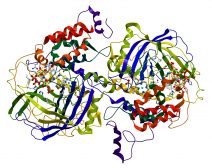Definition
noun
A form of electromagnetic radiation that is generally characterized by wavelengths ranging from one meter to one millimeter, and with frequencies between 300 MHz (100 cm) and 300 GHz (0.1 cm)
Supplement
The electromagnetic spectrum pertains to the entire range of wavelengths of electromagnetic radiation. It includes gamma rays, X-rays, UV, visible light, infrared, microwaves, and radio waves.
Microwaves are a form of electromagnetic radiation generally characterized by having wavelengths ranging from one meter to one millimeter, and with frequencies between 300 MHz (100 cm) and 300 GHz (0.1 cm). In the electromagnetic spectrum, they are in between the infrared and the radio waves.
Microwave radiation is a non-ionizing type of radiation. Therefore, it cannot cause ionization since it does not hold sufficient energy to do so. Nevertheless, there were studies suggesting the possible carcinogenic effect at long-term exposure.1 In spite of that, exposure to low-level microwave radiation generally does not lead to adverse biological effects. High-intensity exposure though may cause burns due to heat induced in the body.
See also:
Reference(s):
1 Goldsmith, J. R. (December 1997). “Epidemiologic evidence relevant to radar (microwave) effects”. Environmental Health Perspectives. 105 (Suppl. 6): 1579–1587.







